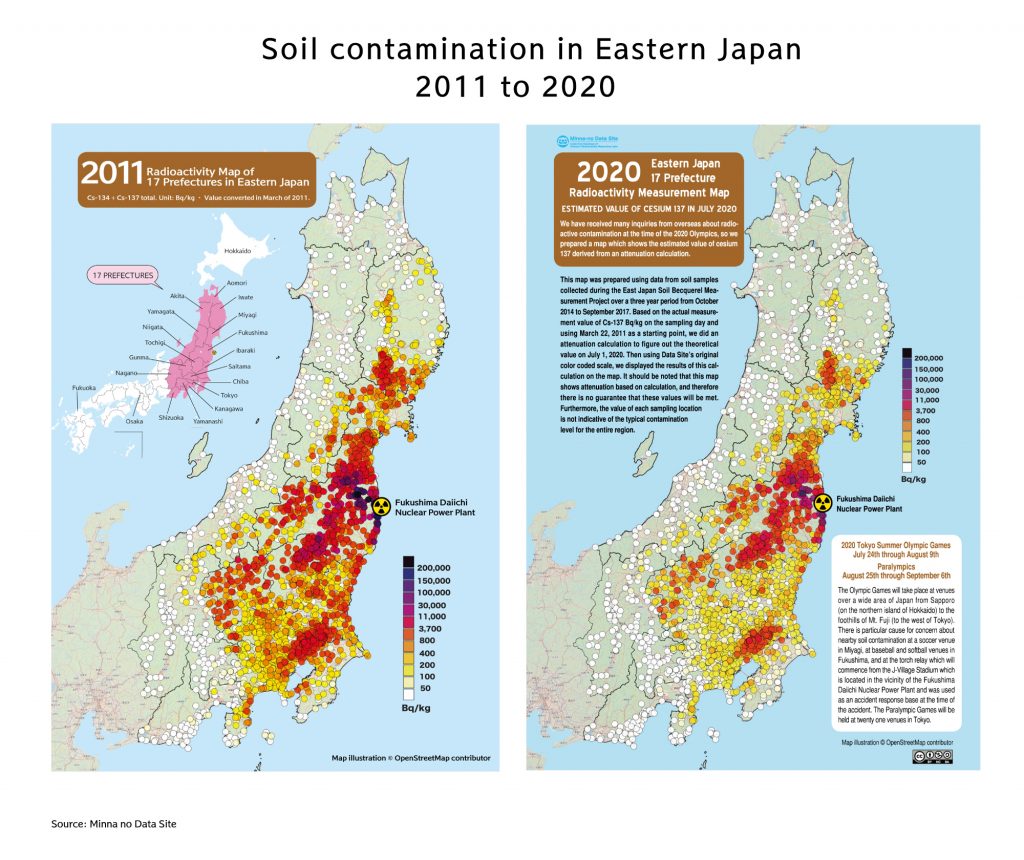
Soil contamination from the nuclear accident was huge, and the problems continue.
After TEPCO’s Fukushima Daiichi Nuclear Power Plant disaster, a mass of air containing radioactive materials (plume) passed over a wide area of eastern Japan, fell down with rain and snow, and was deposited in the soil.
Since then, the concentrations decreased due to the physical decay of radioactive materials, but the contamination persists to this day.
In some places, soils containing radioactive materials are washed down from mountain forests by rain, so radioactive concentrations are rising locally.
The national and local governments mainly measure air dose rates (in units of microsieverts per hour), but air dose rates are unstable and do not necessarily reflect the actual situation of radiation contamination.
Minna-no Data Site(Everyone’s Data Site)Collective Database of Citizen’s Radioactivity Measuring Labs set up the “East Japan Soil Becquerel Measurement Project.” Citizens all over eastern Japan collaborate to collect soil samples and measure radioactive substances contained in the soil. The Data Site integrates those findings and visually displays the status of radioactive contamination.
